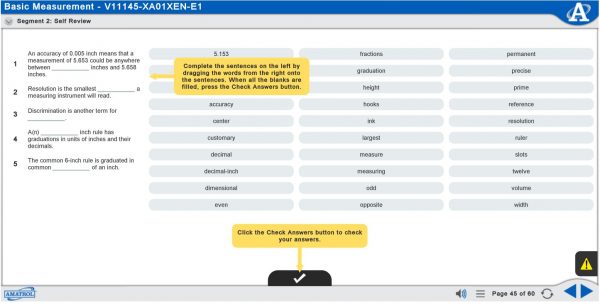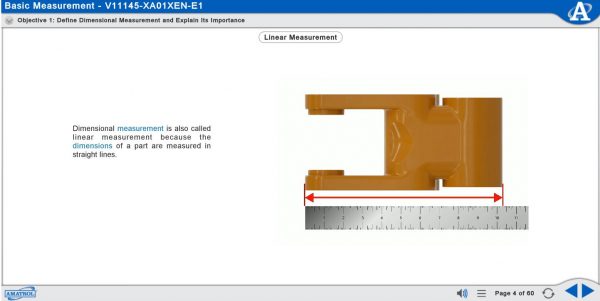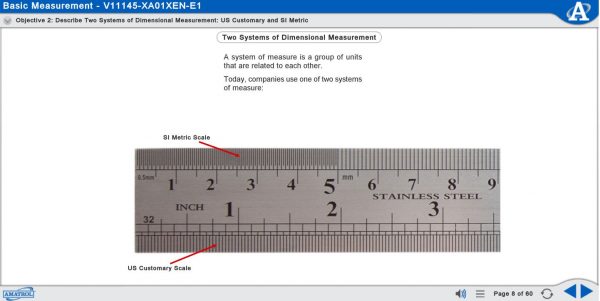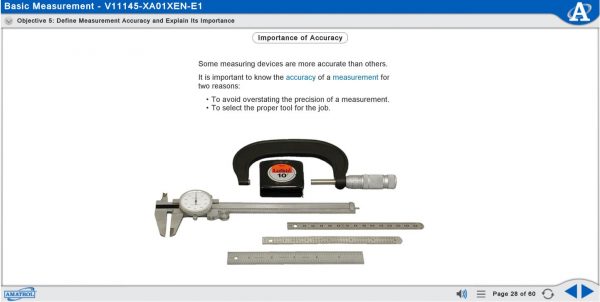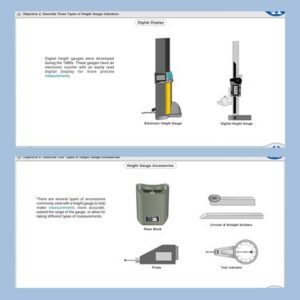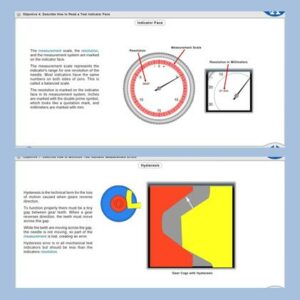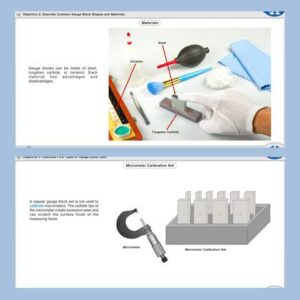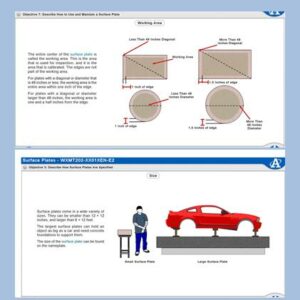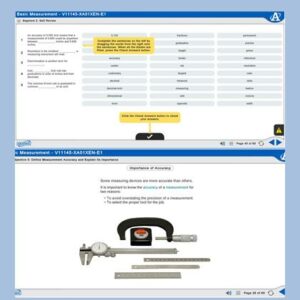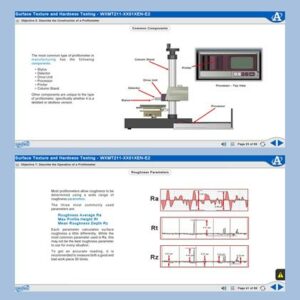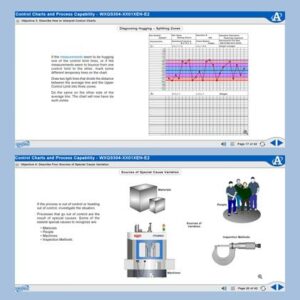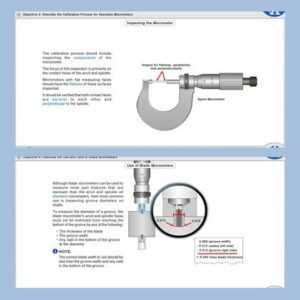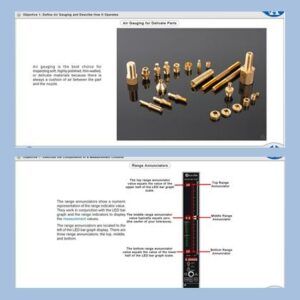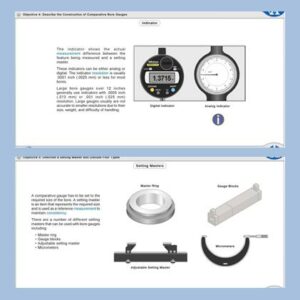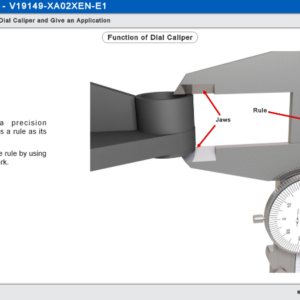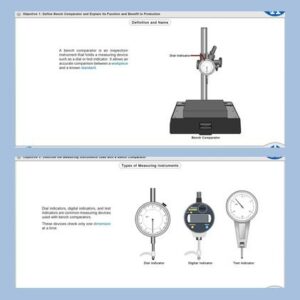Amatrol’s eLearning curriculum is unique in that it thoughtfully combines in-depth theoretical knowledge with practical, hands-on skills. This powerful combination of knowledge and skills solidifies understanding and creates a strong foundation for pursuing more advanced skills.
For example, the precision gauging eLearning course covers important topics, such as:
Basic Measurement
Learners begin with an introduction into basic measurement, including SI Measurement, US Customary Measurement, and measurement conversion. Individual lessons focus on two systems of dimensional measurements, function and construction of a machinist’s rule, measurement accuracy, and how to convert measurement between US Customary System and the SI Metric System. Learners will also practice skills, such as using a metric machinist’s rule to measure objects, using a rule graduated in common fractions of an inch to measure a length, and converting between US Customary Units and SI Metric Units.
Precision Measurement
Using Amatrol’s precision measurement eLearning course, learners will study dial and digital calipers, and US Customary and SI Metric micrometers. Individual lessons focus on the function and use of a dial/digital caliper, function of a micrometer, and how to use an inside/outside micrometer. Learners will also practice skills, such as calibrating both a dial and digital caliper, using calipers to measure both an inside/outside dimension of a part, and using an outside micrometer graduated in both US Customary Units and Metric Units to measure the outside dimension of a part.
Dimensional Gauging
In this module, learners will study various aspects and components of dimensional gauging, including introduction to gauging, indicator measurement, go no-go gauging tools, and indicator-type gauging tools. Individual lessons focus on two methods of gauging, function of a gauge block, operation of a plug and thread plug gauge, and operation of a bore, depth, and snap gauge. Learners will also practice skills, such as mastering a dial indicator; using a plug, thread and step pin gauge; and using a bore, depth and snap gauge.


